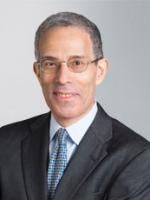The Court of Appeals for the Seventh Circuit last week reversed a $2.46 billion judgment in a long-running securities-fraud class action against Household International and granted a new trial on limited issues. The opinion in Glickenhaus & Co. v. Household International, Inc. 2015 WL 2408028 (7th Cir. May 21, 2015), provides a sophisticated analysis of events studies and loss causation and brings further clarity to what it means to “make” a false statement under the federal securities laws.
The case, which was filed 2002, alleged that Household and three of its top executives committed securities fraud by misrepresenting Household’s lending practices, delinquency rates, and earnings from credit-card agreements. Those misrepresentations purportedly inflated Household’s stock price during the relevant period.
The case went to trial, and plaintiffs’ damages expert proposed two economic models to determine the loss that defendants’ alleged misrepresentations had supposedly caused: (i) the “specific disclosure” model, which “identified each major disclosure event and then measured the disclosure’s effect on the stock price on that specific day,” and (ii) the “leakage” model, which attempts to consider the possibility that the supposed “truth” might have leaked into the market, and which therefore considers price movements over a broader period. The leakage model, however, did not account for “company-specific information unrelated to fraud-corrective disclosures.”
The jury found for the plaintiffs and adopted plaintiffs’ expert’s leakage model. In October 2013, the District Court entered a final judgment of $2.46 billion against Household and the executives.
On appeal, defendants challenged both the leakage model’s failure to account for company-specific information unrelated to the alleged fraud and the instructions given to the jury regarding what it means to “make” a false statement under the Supreme Court case Janus Capital Group v. First Derivative Traders, 131 S. Ct. 2296 (2011). The Seventh Circuit agreed with defendants on both points.
Loss Causation and Events Studies
Glickenhaus is one of the few cases to have gone to trial based on a leakage theory, which is a regression-based approach to showing loss causation in securities fraud cases. Based on the assumption that major disclosures often leak before they are announced, the leakage model begins by identifying “disclosure periods,” which are a range of dates around the day that the supposed truth about a previously misrepresented issue is finally disclosed. Then, the model looks at market- and industry-level trends to eliminate share-price movement attributable to information not specific to the firm. The sum of remaining changes in share price during the disclosure period is assumed to be the amount by which the stock was overpriced because of the alleged fraud.
Although the court rejected defendants’ general argument that the leakage model of loss causation was legally insufficient, the court accepted defendants’ additional argument challenging the specific model used in this case. The court agreed that the leakage model adopted by the jury had not accounted for whether “firm-specific, nonfraud factors” had contributed to the collapse in Household’s stock price. While the plaintiffs’ expert had testified in general terms that he had looked for and had not found nonfraud-related information responsible for changes in share price, the court ruled that the defendants were entitled to an opportunity to rebut the expert’s general conclusion by identifying “significant, firm-specific, nonfraud related information that could have affected the stock price.” Where defendants can make such showing, plaintiffs must adjust their model to account for the information. The court explained:
If the plaintiffs’ expert testifies that no firm-specific, nonfraud related information contributed to the decline in stock price during the relevant time period and explains in nonconclusory terms the basis for its opinion, then it’s reasonable to expect the defendants to shoulder the burden of identifying some significant, firm-specific information that could have affected the stock price. If they can’t, then the leakage model can go to the jury; if they can, then the burden shifts back to the plaintiffs to account for that specific information or provide a loss-causation model that doesn’t suffer from the same problem, like the specific-disclosure model. One possible way to address the issue is simply to exclude from the model’s calculation any days identified by the defendants on which significant, firm-specific, nonfraud related information was released.
“Making” a False or Misleading Statement
In addition to remanding for a new trial on loss causation, the Seventh Circuit also accepted the defendants’ general argument concerning what it means “to make” a false statement in violation of the Securities Exchange Act. The defendants based their challenge on the Supreme Court’s Janus decision, which held:
For purposes of [SEC] Rule 10b-5, the maker of a statement is the person or entity with ultimate authority over the statement, including its content and whether and how to communicate it. Without control, a person or entity can merely suggest what to say, not “make” a statement in its own right. One who prepares a statement on behalf of another is not its maker.
Janus, 131 S. Ct. at 2302.
The Glickenhaus jury had been instructed that a Rule 10b-5 claim survived if the defendants had “made, approved, or furnished information to be included in a false statement of fact” (emphasis added). Defendants objected to these instructions as inconsistent with Janus’s ultimate-authority standard, but the District Court overruled the objection, holding that the Janus rule applies “only to legally independent third parties” and not to officers or directors within the corporate entity.
The Seventh Circuit disagreed. In what might be the only appellate decision so far that squarely addresses the issue, the court ruled that “[n]othing in Janus limits its holding to legally independent third parties.” Thus, Janus’s high standard for “making” a statement applied to the corporate insiders named as codefendants with Household.
In examining whether the District Court’s error caused prejudice, the court parsed the meaning of Janus. First, the Seventh Circuit ruled that the question of whether a company’s official press releases are “made” by the CEO is a fact-based inquiry. The CEO “makes” the press release if it is “attributed” to the CEO, if the CEO “actually deliver[ed]” the press release, or if the CEO “actually exercised control over the contents of the press release.” Second, the court held that, if the CEO drafts a false statement given to the press, both the CEO as author and the person who reads the statement verbatim have “made” the statement. Third, the court found a triable question of fact as to whether the CEO’s presence in a room during a subordinate’s presentation and question-and-answer session means that the CEO “made” the statement actually uttered by the subordinate.
It remains to be seen whether, or by how much, the original $2.46 billion judgment will change when the case is retried on these limited issues. At the very least, Glickenhaus provides an insightful analysis of loss causation and clarifies that Janus applies within the corporation, not just to outsiders. Proskauer will continue to monitor these and related developments.




 />i
/>i
